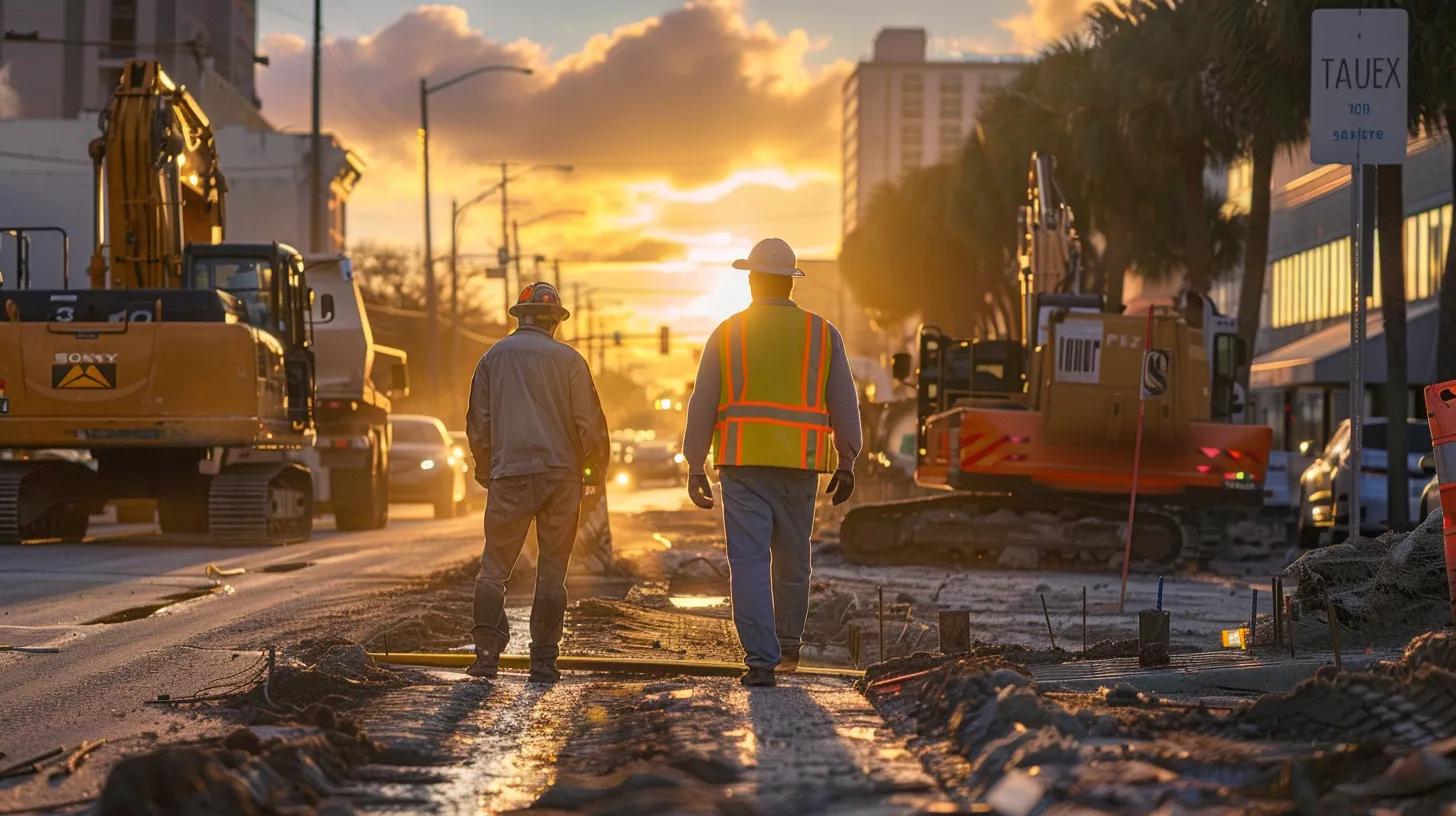
An Overview of Drain Replacement Costs for Tampa Homes

Drain replacement can be an overwhelming and costly project for Tampa homeowners. Understanding the average costs, processes, and influencing factors is essential for making informed repair decisions. This article provides a breakdown of cost factors, step-by-step procedures, and tips for choosing a contractor to help you achieve reliable and cost-effective plumbing solutions in Tampa.
What Is the Average Cost of Drain Replacement in Tampa?
Drain replacement in Tampa typically costs between $1,500 and $5,000. Factors such as project complexity, drain material, and the condition of the existing system play significant roles in determining the final price.
What Factors Influence the Cost of Drain Replacement?
Costs are affected by the drain’s length, soil conditions, accessibility, and damage extent. Projects in areas with rockier soils or limited access may require specialized equipment and extra labor, while older systems might uncover hidden repairs that increase the expense.
How Do Material Types Affect Drain Replacement Prices?
Materials like PVC, cast iron, and composite options influence pricing. Economical PVC lowers costs, whereas durable cast iron increases labor and material expenses. Material choices also affect maintenance intervals and future replacement needs.
What Are Typical Labor and Permit Costs in Tampa?
Labor typically ranges from $75 to $150 per hour in Tampa. Permit fees add an additional $100 to $500, ensuring all work complies with Tampa’s building codes and safety standards.
How Does Trenchless Drain Replacement Compare in Cost?
Trenchless methods cost about 10% to 20% more upfront because of specialized equipment, but they reduce excavation, restoration, and environmental impact, making them an appealing option despite the higher initial price.
What Is the Step-by-Step Process of Drain Replacement in Tampa?

The process follows a methodical approach to ensure compliance with local codes and long-term durability of the repaired drain.
How Is a Drain Line Inspection Conducted?
A video camera inspection is used to navigate through drain lines to identify the precise location and extent of the damage, confirming if replacement is needed.
What Are the Signs You Need Drain Replacement?
Indicators include frequent backups, slow drainage, foul odors, persistent clogs, and increased water damage around the foundation. These signs suggest that the drain is failing and needs prompt attention.
How Long Does Drain Replacement Usually Take?
Most residential drain replacements take between one to three days. The duration depends on installation complexity, permit requirements, and any additional repairs needed.
What Are the Differences Between Traditional and Trenchless Methods?
Traditional replacement involves extensive digging that can disturb landscaping and driveways, while trenchless methods require minimal excavation. Trenchless techniques generally reduce project time and restoration costs, despite a slightly higher initial investment.
What Are the Benefits and Costs of Trenchless Drain Replacement in Tampa?
Trenchless replacement has grown popular in Tampa for its efficiency and reduced disruption to daily life.
How Does Trenchless Drain Replacement Work?
Trenchless methods use a special lining or pipe bursting technique to replace the old drain without extensive trench digging. This minimally invasive approach preserves much of the above-ground infrastructure.
What Are the Advantages of Trenchless Drain Replacement?
Benefits include lower restoration costs for landscaping and driveways, faster project completion, and less disruption to home life. Homeowners appreciate the reduced mess and overall impact during the replacement.
How Much Does Trenchless Drain Replacement Cost Compared to Traditional?
Although the initial cost may be 10% to 20% higher than traditional replacement, savings on restoration expenses often balance the premium, making trenchless replacement a financially sound long-term option.
When Is Trenchless Drain Replacement Recommended?
This method is recommended when preserving landscaping, driveways, or nearby structures is a priority, or where traditional excavation access is limited.
How to Choose the Right Drain Replacement Contractor in Tampa?

Choosing a reputable contractor is crucial. Homeowners should evaluate contractors carefully based on licensing, experience, and customer service.
What Qualifications Should a Tampa Plumber Have?
A qualified plumber should be fully licensed, insured, and experienced in drain replacement projects. Certifications and proof of expertise in trenchless technology add credibility.
Why Is Local Expertise Important for Drain Replacement?
Local contractors understand Tampa’s soil conditions, permit requirements, and codes. Their regional expertise can lead to more accurate estimates and faster permit processes, reducing delays.
How to Verify Transparent Pricing and Warranty Offers?
Request detailed written estimates that break down costs for labor, materials, and permits. Contractors offering clear pricing and strong warranties on both work and materials are generally more reliable.
What Questions Should You Ask Before Hiring?
Ask about past projects in Tampa, expected timelines, financing options, and post-installation support. Clarify any possible hidden fees to ensure a transparent process.
What Are Common Drain Line Types and Their Lifespans in Tampa?
Tampa commonly uses PVC, cast iron, and clay drain lines, each with unique properties and lifespans.
What Are the Most Common Drain Line Materials Used in Tampa?
PVC is popular for its low cost and ease of installation, while cast iron is valued for its durability and noise reduction qualities.
How Long Do Different Drain Lines Typically Last?
PVC lines can last around 50 years, whereas well-maintained cast iron lines may exceed 75 years. However, environmental factors and installation quality can shorten these lifespans.
How Does Material Choice Impact Replacement Frequency and Cost?
More durable materials have higher initial costs but may reduce the need for frequent replacement. In contrast, cheaper options may need earlier replacement, increasing lifetime costs.
What Tampa-Specific Regulations and Permits Affect Drain Replacement Costs?

Local building codes and permit requirements significantly influence drain replacement costs and timelines.
What Permits Are Required for Drain Replacement in Tampa?
Both traditional and trenchless projects require permits from Tampa’s building department. The process complexity generally increases with project size and location.
How Do Tampa Plumbing Codes Influence Replacement Methods?
Plumbing codes specify acceptable materials, practices, and methods, sometimes favoring trenchless techniques. These codes ensure that any replacement meets safety, efficiency, and performance standards.
How Can Permitting Affect Project Timeline and Cost?
The permitting process can add time and cost. Delays may occur if paperwork is incomplete or if inspections reveal further issues. Open communication with the contractor about the permit timeline is essential.
What Are Frequently Asked Questions About Drain Replacement Costs in Tampa?
Common questions from homeowners help clarify the drain replacement process and its costs.
How Much Does It Cost to Replace a Drain Line in Tampa?
Replacement costs generally range from $1,500 to $5,000, influenced by material, labor, access, and permit fees.
What Are the Signs of a Damaged Drain Line?
Look for slow drains, frequent backups, foul odors, and visible cracks or leaks—early detection can prevent more severe damage and higher repair costs.
Can Trenchless Drain Replacement Save Money?
While the upfront cost is slightly higher, reduced restoration costs and less property damage can lead to long-term savings.
How Do I Get a Transparent Quote From Tampa Drain Replacement Services?
Obtain several detailed written quotes that list all associated costs, helping ensure fair pricing and avoid hidden fees.
Frequently Asked Questions
Q: How often should drain lines be inspected for maintenance? A: Inspect drain lines every 3 to 5 years to identify potential issues early.
Q: Is it necessary to replace the entire drain line if one section is damaged? A: Not always; sometimes only the affected portion needs replacement based on the damage extent.
Q: Can homeowners perform a drain replacement themselves? A: Professional replacement is recommended due to complex regulations and the potential for hidden damage.
Q: Are there financing options available for drain replacement projects in Tampa? A: Many contractors offer financing or flexible payment plans to help manage the expense.
Q: What maintenance steps can help prolong the lifespan of drain lines? A: Regular inspections, proper waste disposal, and scheduled cleanings are key to maintaining drain function.
Final Thoughts
Drain replacement services in Tampa involve several key cost factors and methodical procedures. Homeowners benefit from understanding how material choices, labor, and permits affect overall expenses. Whether choosing traditional or trenchless methods, selecting a knowledgeable contractor and adhering to local regulations is critical. Staying informed about drain maintenance can lead to better planning and long-term savings for your home.
